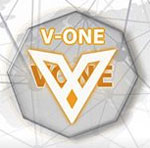V-One Review: VONE points “lending” daily ROI Ponzi scheme
 V-One provide no information on their website about who owns or runs the business.
V-One provide no information on their website about who owns or runs the business.
The V-One website domain (“v-one.io”) was privately registered on October 30th, 2017.
The official V-One Facebook group was created by Lucas Santino on November 30th.
Santino appears to be running the show and refers to V-One in the possessive.
Like to give you all a peak at my coding behind the scene! still working on internal exchanger 🙂 wont take long to complete.
No information on Lucas Santino outside of the V-One Facebook group is available, raising the question of whether he actually exists.
The Lucas Santino Facebook account itself appears to be bogus, having only been created on November 26th.
As always, if an MLM company is not openly upfront about who is running or owns it, think long and hard about joining and/or handing over any money.
V-One Products
V-One has no retailable products or services, with affiliates only able to market V-One affiliate membership itself.
The V-One Compensation Plan
V-One affiliates invest in VONE points on the promise of an advertised ROI.
- invest $100 to $1000 and receive a 0.35% daily ROI for 199 days (69.65%)
- invest $1010 to $5000 and receive a 0.45% daily ROI for 179 days (80.55%)
- invest $5010 to $10,000 and receive a 0.65% daily ROI for 129 days (83.85%)
- invest $10,010 to $100,000 and receive a 1.1% daily ROI for 99 days (108.9%)
In addition to a daily ROI, investing V-One affiliates also receive “company profit shares”.
The idea is that the daily ROI and company profit shares will return an affiliate more than they initially invested.
Referral commissions on invested funds are available, paid out down three levels of recruitment (unilevel):
- level 1 (personally recruited affiliates) – 5%
- level 2 – 3%
- level 3 – 1%
Joining V-One
V-One affiliate membership is free, however free affiliates can only earn referral commissions.
Full participation in the V-One income opportunity requires a minimum $100 investment.
Conclusion
V-One markets itself as an ICO for VONE points.
At the time of publication VONE is not publicly tradeable. It exists only as points being sold off by the anonymous V-One owner(s).
The first sell-off started on or around November 29th. A purported 6.1 million VONE points were sold for 10 cents till December 7th.
After December 7th and currently VONE is being flogged for 50 cents to $1 (first million at 50 cents, the remaining 1.1 million at $1).
After December 20th what’s left will be flogged for $1.10 to $1.30.
So why are people investing in VONE?
No practical reason. VONE is yet another worthless altcoin token launch. VONE has no practical application and has no public supply and demand.
The sole reason people are investing in VONE is because of the attached “lending” Ponzi scheme and representation that VONE’s “value on launch” is “expected” to be $20 to $70.
This launch value is based on nothing more than projected affiliate recruitment into the V-One lending Ponzi scheme.
As broken down in the compensation plan analysis above, V-One affiliates invest real money in exchange for worthless VONE points.
These points are then parked back at V-One, in exchange for a daily ROI.
The only verifiable source of revenue entering V-One is new affiliate investment, the use of which to fund a daily ROI makes it a Ponzi scheme.
At the time of publication Alexa estimate the US is the second largest source of traffic to the V-One website.
This is significant because the SEC is going after ICOs as securities offerings.
Invest Vone Coins & Earn!
You will receive daily profit based on your investment option. Upon investment term completion, you will receive your CAPITAL BACK to take out from the Vone lending platform or optionally reinvest back in lending platform to continue receiving daily profit.
As the above marketing copy, taken directly from the V-One website, demonstrates; V-One is very much an investment opportunity.
A search of the SEC’s Edgar database turns up nothing recent for V-One.
That means in addition to committing wire fraud through operation of a Ponzi scheme, V-One is also offering unregistered securities to US residents.
Ultimately however, whether the SEC shuts down V-One is secondary to the fact that the math behind Ponzi schemes guarantees the majority of investors will eventually lose money.
The exit strategy for ICO “lending” Ponzi admins is pretty straight forward.
If they attract enough investors, they buy an altcoin script, convince a few dodgy exchanges to list it (based on “look how much money was invested!”), get listed, use that to profess legitimacy and then pay out funds invested until the minimum reserve is reached.
The admins then stop paying out and make off with what’s left. Gullible affiliates who invested on baloney promises of riches meanwhile are left with an altcoin whose value fast approaches zero.
And that’s on top of most affiliates losing money on the ROI side of things, because that’s how a Ponzi scheme “works”.
This has played out time and time again in the MLM underbelly “lending” Ponzi niche. V-One isn’t going to be any different.

